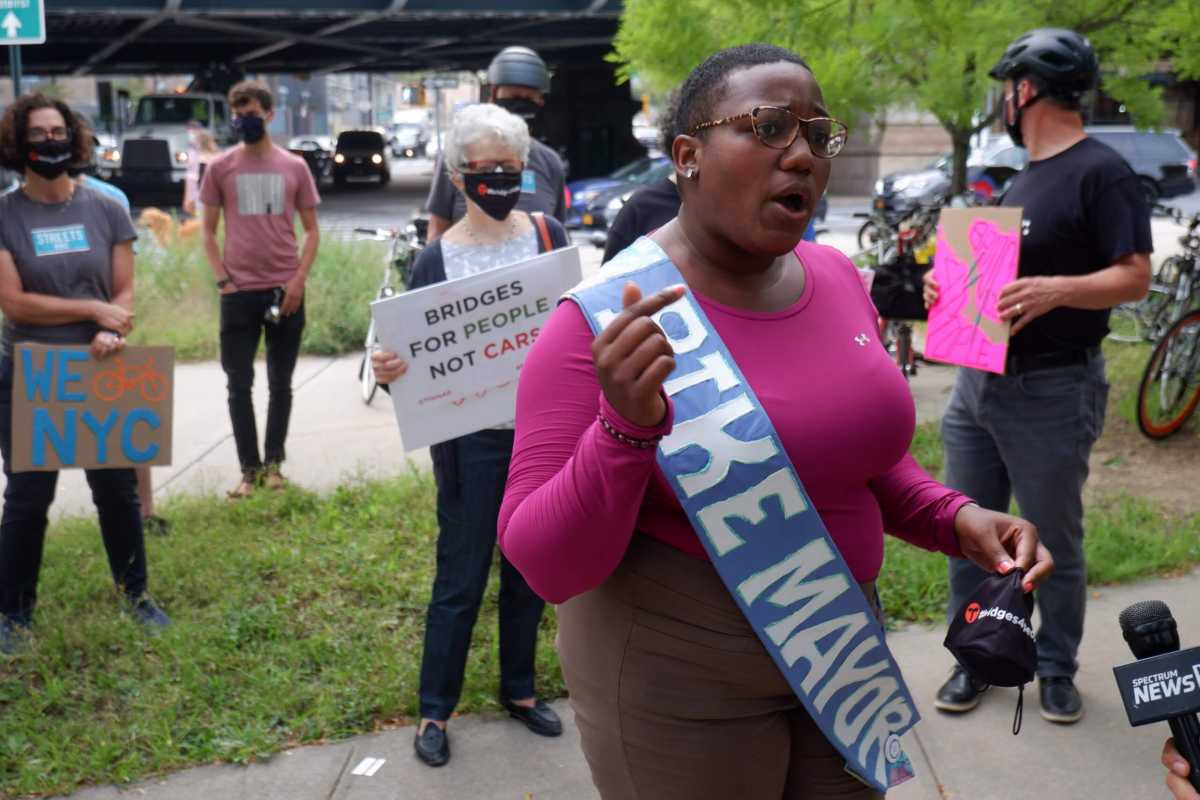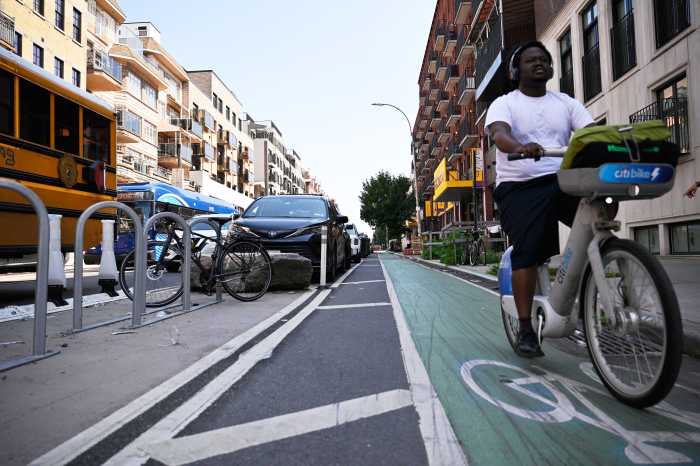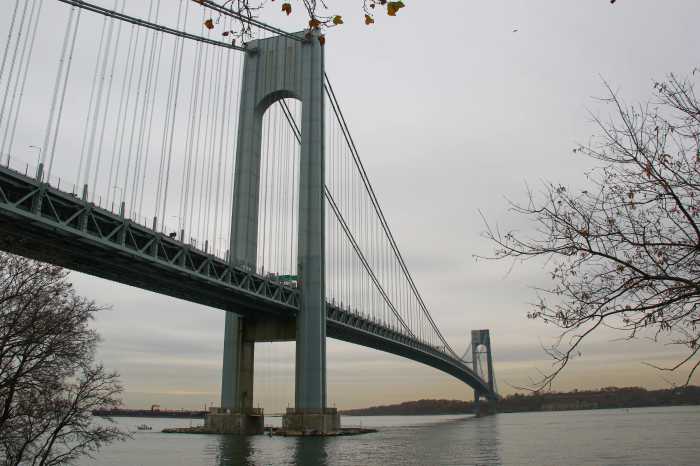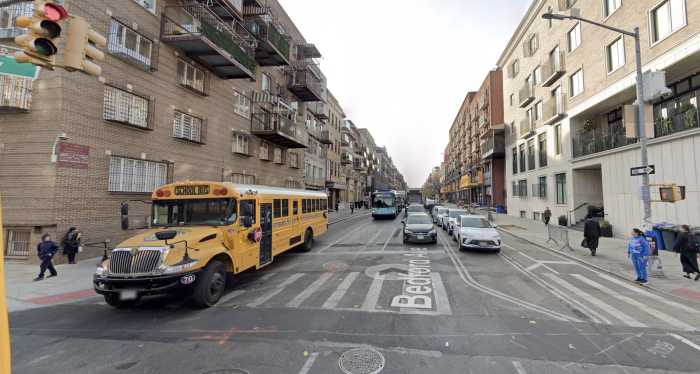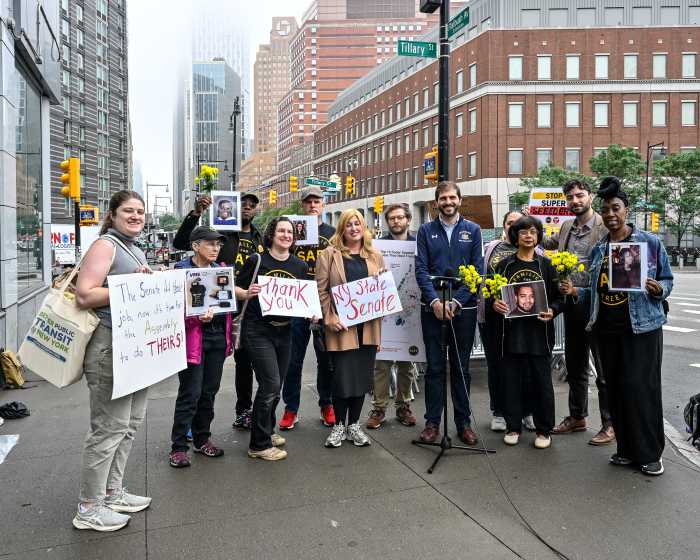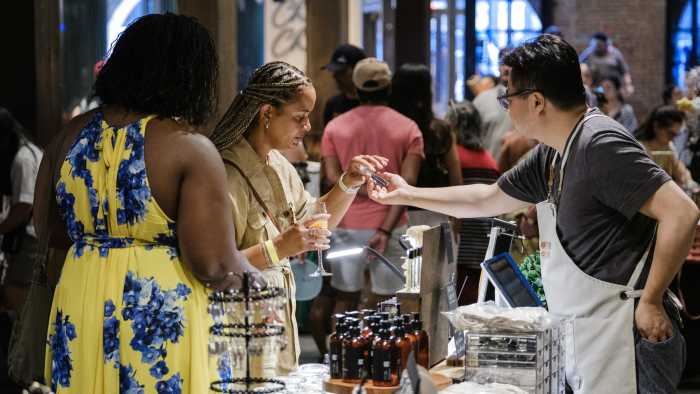Bike advocates rallied on Wednesday to demand better cycling infrastructure for pedal pushers looking to cross the East River — arguing the city’s transit honchos should repurpose car lanes on the Brooklyn, Manhattan, and Williamsburg bridges into bike lanes.
“As people continue to venture out more in a safe and socially-distanced way, we need to provide more protected space for them to do so,” said Katherine Willis, an organizer for the campaign Bridges4People first launched last week by advocacy group Transportation Alternatives.
As Department of Transportation stats show, cycling counts over those three spans and Queensboro Bridge have increased more than 22 percent year-over-year to 23,029 two-wheel riders during August, compared with 18,819 in the same month last year.
Activists at the afternoon demonstration along Jay Street beneath the Manhattan span argued the increase — which is largely due to travelers concerned about using public transit amid the pandemic — warranted removing two car lanes on each of the three East River crossings, and using them for protected bike lanes.
“When this all began with the pandemic with the bicycle boom, our mayor said to us, ‘Get on a bike, that’s how we’re going to social distance, that’s how we’re going to stay safe,'” said Courtney Williams, an activist for cyclists of color and self-styled People’s Bike Mayor for the city. “You have ignited the will of the people and you are not making a way, you need to follow up with a way.”
The connectors currently feature heavy bike and pedestrian traffic, with the Brooklyn Bridge’s wooden walkway being the tightest squeeze, said Councilman Steve Levin, whose district encompasses all three bridges.
“I bike on all three bridges — Brooklyn [Bridge] is by far the worst,” Levin said. “I avoid it when I bike in. I’ll go 10 minutes out of my way and take the Manhattan [Bridge].”
When asked if the legislator would introduce a bill mandating the city do the lane change on the bridges, the pol said he wasn’t sure whether that was within his power, but vowed to pen such a law if he could.
“I’m not sure that that’s within our jurisdiction as legislation actually,” he said. “If it is legislatable I would be in support of it.”
In June, a DOT rep spilled the beans to a Downtown Brooklyn community board that transit gurus were studying the idea of turning a lane of the Brooklyn Bridge roadway into a bike lane, hinting that more information was to follow “in the coming weeks” — but agency commissioner Polly Trottenberg backtracked days later, while de Blasio also cast doubt on the idea.
A former DOT policy director-turned bike advocate said that while revamping the cross-borough spans could be challenging due to their high and complex traffic volumes, street planners have done it before at the smaller Pulaski Bridge between Greenpoint and Queens, where the agency turned one vehicle lane into a two-way bike path in 2016.
“It’s not something new for the city, it’s been done by city government,” Orcutt said. “It would be harder to take some space to find it on the very heavily-used East River bridges, but look — everything in New York City is a balancing act, and things have gotten way too far out of balance in one direction.”
Mayor Bill de Blasio’s press office did not immediately return a request for comment.


